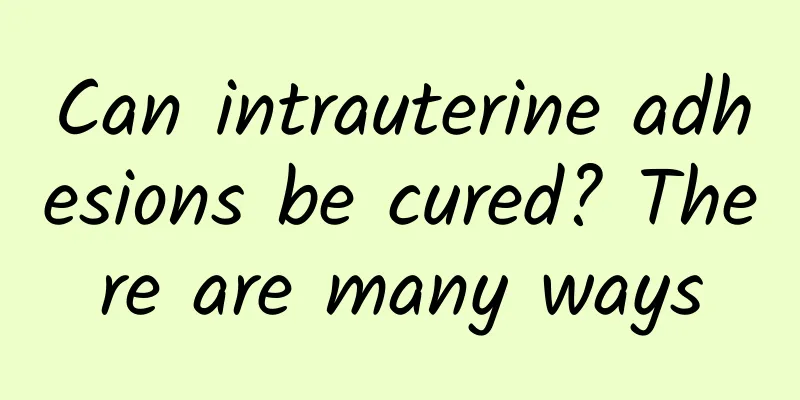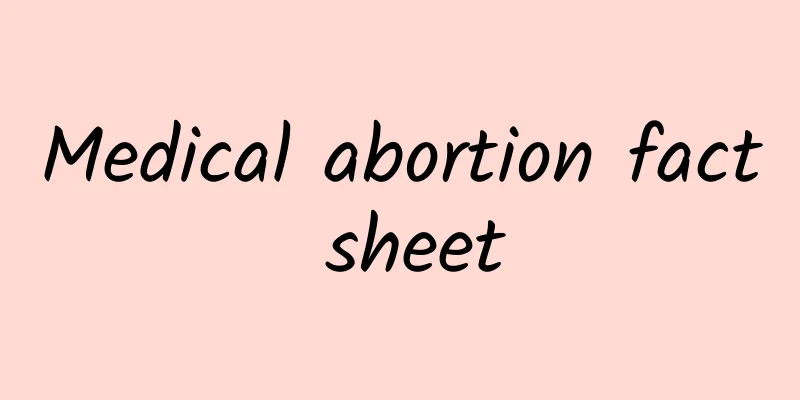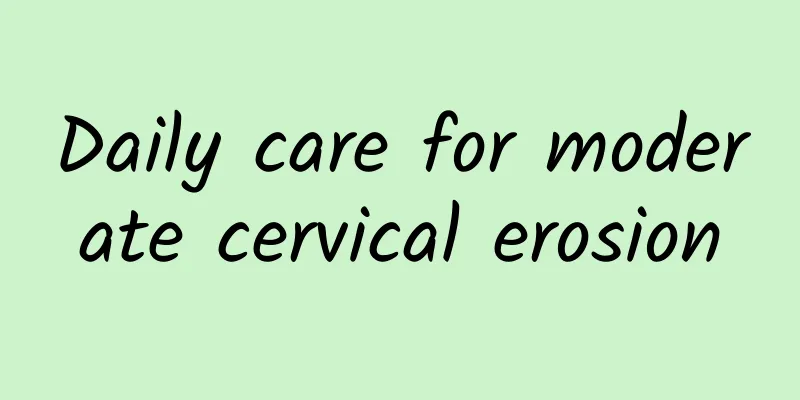Can intrauterine adhesions be cured? There are many ways

|
Intrauterine adhesion refers to adhesion of the inner wall of the uterus causing full or partial occlusion of the uterine cavity. Intrauterine adhesion can lead to abnormal menstruation, secondary oligomenorrhea or amenorrhea, oligomenorrhea, amenorrhea and periodic lower abdominal pain after abortion or curettage; secondary dysmenorrhea, infertility, early pregnancy miscarriage, ectopic pregnancy, placenta implantation during delivery, postpartum hemorrhage, etc. Therefore, treatment is imperative. Next, let's take a closer look at the treatment methods for intrauterine adhesions! 1. TCM treatment of intrauterine adhesions <br/> TCM treatment can improve the repair of uterine wall scar tissue, fibrosis, and loosening of adhesion tissue, improve tissue tolerance, and repair damaged endometrium, greatly increasing the chance of pregnancy. Warming up the kidney yang, consolidating and stopping leukorrhea are the main purposes of TCM treatment of intrauterine adhesions. TCM treatment causes relatively little harm to the patient's body, and the side effects of Chinese medicine are also very small. In general, TCM treatment methods can be used. Another method is to use TCM intraperitoneal perfusion, which is to first find the cause of intrauterine adhesions and then treat them symptomatically. Mild and moderate intrauterine adhesions can generally be exempted from surgery by taking Chinese medicine. 2. Intrauterine Adhesion Separation Surgery <br/>For patients with more severe intrauterine adhesions, intrauterine adhesion separation surgery is the best choice. Hysteroscopic intrauterine adhesion separation surgery is more direct, accurate, and reliable, and significantly improves the accuracy of diagnosis. The surgery only separates the adhered intrauterine tissue, and does not affect other normal tissues in the uterine cavity. The diagnosis and treatment are safe and reliable. Hysteroscopic intrauterine adhesion separation surgery is used to separate the adhesion lesions while injecting a lubricant to prevent adhesion blockage, effectively avoiding the recurrence of adhesions and infertility in the patient's uterine cavity. |
<<: Can I get pregnant with intrauterine adhesions? The chance of pregnancy is low
>>: How to treat intrauterine adhesions? 3 common methods
Recommend
How to treat moderate cervical erosion in women? It is recommended to treat moderate cervical erosion in women in this way
Cervical erosion is a very common gynecological d...
Polycystic ovary amenorrhea pregnancy
Pregnancy after amenorrhea in patients with polyc...
What medicine should I take for a 2cm uterine fibroid? Can a 2cm uterine fibroid be treated with medicine?
What medicine should I take for a 2 cm uterine fi...
Experts explain the bleeding symptoms of irregular menstruation
Clinically, bleeding is a more serious symptom of...
The dangers of multiple uterine fibroids that everyone needs to pay attention to
Among patients with uterine fibroids, many female...
What are the main causes of vulvar leukoplakia?
In our lives, female compatriots may not know muc...
Detailed description of the prevention methods of cervicitis
Before women have hymen, it serves as a protectiv...
Yoga cow face pose not only relieves pain and fatigue, but also tightens the lower body
Sitting for long periods of time and lack of acti...
What causes uterine fibroids and how to prevent them
Uterine fibroids are mainly caused by multiple fa...
Nursing measures for endometrial tuberculosis
Endometrial tuberculosis is now common in many wo...
Prolonged menstrual period is a common symptom of menstrual irregularity
Experts say that there are actually many symptoms...
Summer sports mode on! These exercises make you lose weight the more you play
Taiwan has everything except the largest number o...
Who says vegetarians are less likely to suffer from stroke? (Down)
Regular health check-ups should not be ignored In...
How to treat intramural uterine fibroids? Common treatment methods for intramural uterine fibroids
How to treat intramural uterine fibroids? Can con...
What are the symptoms of endometrial tuberculosis?
For women of childbearing age, endometrial tuberc...









